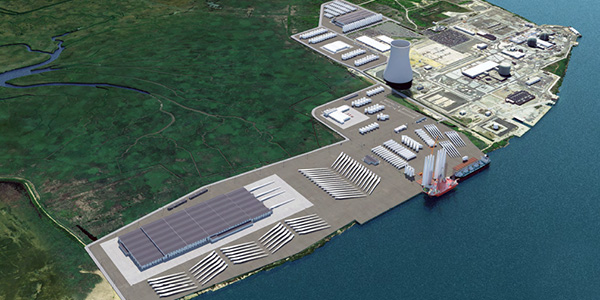New Jersey has released a plan detailing how it will procure 7,500 MW in offshore wind resources in the next 15 years as part of its goal to reach 100% clean energy by 2050.
The 82-page draft of the New Jersey Offshore Wind Strategic Plan and its 428 pages of appendices, released last week, calls for the development of the resources while protecting the environment, as well as commercial and recreational fishing areas. The plan anticipates that by 2050, offshore wind will provide 23% of electricity to customers statewide.
A public meeting to discuss the plan originally scheduled for July 20 was rescheduled for Aug. 3.
The recommendations contained in the plan are supported by analyses of environmental and natural resources, ports to support the needed infrastructure, supply chains and the levelized cost of energy.
“The development of New Jersey’s offshore wind infrastructure will create thousands of high-quality jobs, bring millions of investment dollars to our state, and make our state a global leader in offshore wind development and deployment,” Gov. Phil Murphy said in the preamble of the report.
Murphy first introduced the 7,500-MW goal last November when he signed Executive Order 92 at the Liberty Science Center in Jersey City, where he was joined by former Vice President Al Gore. (See New Jersey Doubles OSW Target.)
The plan includes using public and private financing to encourage investment in the New Jersey Wind Port, a proposed 200-plus acre manufacturing facility set to be built in Lower Alloys Creek in 2021, as the region’s first major offshore wind construction and marshaling port.
It also includes ideas for working with equipment manufacturers, developers and potential ports on the development of manufacturing facilities in New Jersey to meet the projected building demands by the 2024-2026 time frame. It also incorporates utilizing the state’s WIND Institute to support research, innovation, stakeholder engagement and training.
Officials also cited continuing collaborations with PJM on offshore wind interconnection and finding the most efficient transmission expansion to accommodate future projects. The plan calls for the evaluation and incorporation of energy storage and smart grid technology.
“We are fortunate to live in a state with abundant coastline and some of the best wind resources in the world, so it is natural for New Jersey to expand this reliable, renewable, cost-effective energy source,” said Robert Asaro-Angelo, commissioner of the Department of Labor and Workforce Development. “This industry has the potential for exponential growth, with tens of thousands of good-paying, family-sustaining jobs.”
While the draft does not detail the potential costs of the plan, it acknowledges that the upgrade of port facilities and the New Jersey Wind Port will require hundreds of millions of dollars in investment.
“Offshore wind represents a once-in-a-generation opportunity for New Jersey,” BPU President Joseph Fiordaliso said. “By investing in this renewable resource, we can provide jobs, clean energy and millions of dollars in economic activity for our state.”




